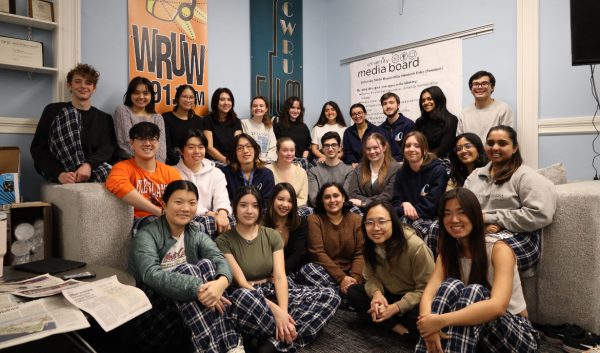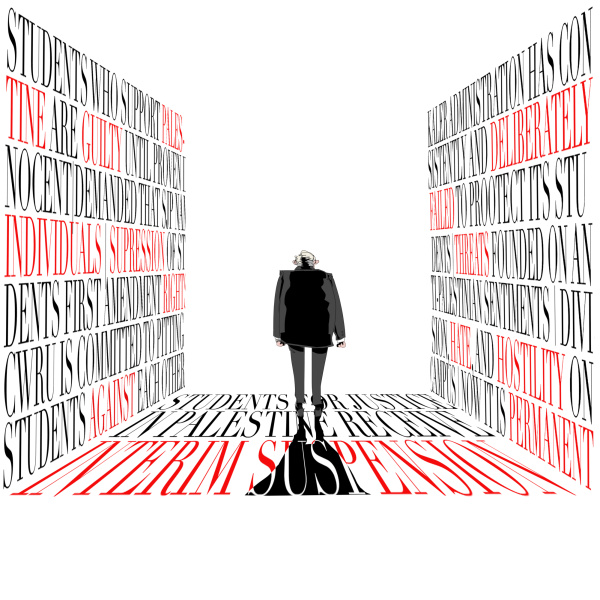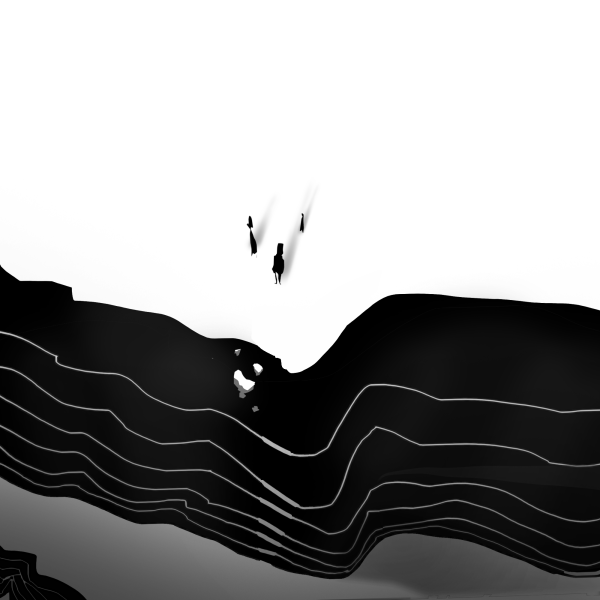Editorial: Semester grades
With finals coming up, the Editorial Board is tired of getting grades. Now it’s our turn to give them.
On the New Residence Hall (Apartments at 1576): D
Office of University Housing, we at The Observer scratch our heads at you. The kitchens of these new apartments don’t have necessary ventilation hoods. They either need to be installed or an equivalent exhaust system has to be implemented. As of Nov. 5, by word of an email from Housing, 14 false fire alarms had gone off in the building. That’s averaging over one false alarm a week and they have continued. This affects more than the 290 students living in the New Residence Hall. Those first-years living in nearby residence halls and most of the Village at 115 aren’t the only ones tired of the fire truck wailing by—we imagine the fire department itself is really sick of it too. The fact that the windows open less than a quarter of the way means there is no way to ventilate the suites.
To the administration, it’s vital to realize Housing is understaffed; Housing may have been able to act this semester if it had the resources. The office has split from Residence Life and Services and had to face the challenges of moving locations mid-semester, not exactly leaving much time for its actual function. By not ensuring enough staff, Case Western Reserve University’s upper administration also holds responsibility.
But, most importantly, the administration and Housing need to solve these problems through open discussions with those living at the residence hall. The aforementioned email from Housing blamed the false alarms purely on student cooking, not willing to concede there was a problem. Housing, specifically, made it into last semester’s grading with the same grade. It’s time to shape up on addressing student concerns.
Undergraduate Student Government (USG): A
The Observer is proud to report that USG has exceeded expectations this semester. USG was already busy before the semester even started. A storage storm for student organizations built up the week before classes began: the groups were told to move their stuff to a different part of Thwing that did not have the required shelves. USG leaders were literally on the ground building shelves in the days leading up to the semester’s start and providing extra hands to help students move their items.
USG is also the sole entity to address near universal student hatred of the Greenie system. They put up signs at Greenie stops on campus, indicating where the shuttles stop and which ones come to each stop. Before this, both pieces of information were generally a mystery to students trying to catch a shuttle.
The fact that USG hosted Richard Bischoff in a general assembly meeting and then held a follow-up forum in conjunction with Undergraduate Diversity Collaborative (UDC) on potential changes to the admissions processes further underscores the depth of their commitment to those they serve. Student leaders were unbiased and repeatedly stated they wanted students to debate amongst themselves. USG is willing jump into issues, even when messy; they painted a checklist of goals achieved and in the works on the spirit wall. Only a group that’s dedicated to the solve problems would be willing to check on their own progress so openly. Each checkbox speaks to their devotion to help CWRU students.
Linsalata Alumni Center’s Location: D
The property allocated for the center is in a perfect position to benefit students. To steal space from students to benefit those who have already graduated is reasoning that lacks a foundation. What did have a solid foundation was the now demolitioned Hubbard House, which served as the police station until this semester. It’s now sadly the site of a future glass box for alumni.
Apart from the nearby Alumni House, there is no credible reason to place the center at its planned location. The location of the Alumni House does not make sense, itself. Student living quarters do not make a good view for visiting alumni.
Many opposed this plan from the start. This includes City Councilman and CWRU alumnus Jeffery Johnson, who attempted to slow the demolition approval process. Alas his efforts failed, as the race to make the building a landmark finished last or in this case, was bulldozed.
It was inappropriate to overlook potential student use. It could have been given to one of the multitude of Greek chapters that lack a house, converted into an athletic area or a place for undergraduate organizations. It’s important to realize that current students on campus lack both of the aforementioned spaces. Many believe that the Tinkham Veale University Center is not for students, but rather glitter for current wealthy graduates. (Think of it as the first round of glass for alumni.)
For anyone who believes that TVUC is for undergraduates only, we would like to remind them that it is a “university” center, not a “student” center. It is to be shared by alumni, student and community.
If another building is to be produced for alumni, the Observer demands that it be in an area of campus not direly needed by student. This can still happen. The property can now easily be converted into an athletic field to add to the nearby basketball courts.
We understand the need to cater to the wishes of alumni; they support the university through countless, generous donations. We appreciate their commitments.
However, destroying an historical house amid controversy over its status as a historical landmark was harsh. The new Alumni Center should be built in a different location. There’s still a chance; don’t fail to listen to students this time around.
Student Action on Issues: C
It was powerful to see the UDC bring students of all backgrounds together to stand with University of Missouri and Yale University. But, as we discussed in the last editorial, we haven’t seen students come together to make a difference on other issues present on our campus.
That includes the issues mentioned above. Students have lost a potentially useful space to the new alumni center. Yet the student body and campus organizations didn’t take action. What’s even more surprising is that the students living in the New Residence Hall didn’t take action after all the challenges the delayed move-in put on them. They face a continuous problem of false fire alarms and poor ventilation, yet there are no voices speaking out.
As mentioned, USG has been doing the grunt work of helping students in incredible ways, but if the student body does not back them, they become another hurdle for USG. Similarly, Diversity 360 appears to be a lasting, potent program, but the Office of Multicultural Affairs can only do so much without student support. There’s a worrying trend on campus that it is dangerous to speak out on campus issues. Instead, the opposite is true: A campus where students don’t speak up is just powerless.
Undergraduate Program Board (UPB): B
This semester saw not one, but two problems in UPB: We saw drastic, disliked changes to Spot Night and poor crowd control plans that created an uncontrolled, volatile ticket line for the Fall Break Montreal Trip. The Editorial Board was harsh on UPB, but it now appears the leaders and committees of UPB can adapt to give CWRU students the programming they want.
UPB not only brought back weekly Spot Nights, but is asking students whether they want the concert to be on the traditional Thursday, or on Fridays. We hope that in the future they are rewarded with an excited crowd. And, let’s not forget the new “Tinkerball”, CWRU’s first homecoming dance in years. We also saw some creative Thwing Tuesdays, an event that lets everyone get their noon fix. Indeed, looking back toward the much-enjoyed Fall Concert early in the semester, time does truly fly when you’re having fun. The Editorial Board is glad UPB is willing to adopt changes based on feedback.
Spartans and Sports: A
Blue CWRU appears to have found its silver-gray lining. The organization has been pumping up students all semester and got everyone riled up during homecoming week. In fact, the organization teamed up with UPB and First-Year Experience to send three buses full of students to cheer on the Spartan football team in Pittsburgh. Spartans this semester were louder than ever; excited crowds and cheering was more common at games this semester. We united as one.
And that wouldn’t have happened without our athletes. The Spartan volleyball team won a bid for the DIII NCAA Championship Tournament, the second time in CWRU volleyball history. We swept Waynesburg University in our homecoming game. Our men’s soccer team beat out rival Carnegie Mellon University in overtime and our women’s soccer team bested Denison University, ranked eighth in the country at the time, also in overtime. Spartans were ready and willing to wipe the floor with other teams and work hard. That clearly paid off in recognition: a grand total of 32 athletes won post-season awards this semester. This is badass; this is CWRU.














